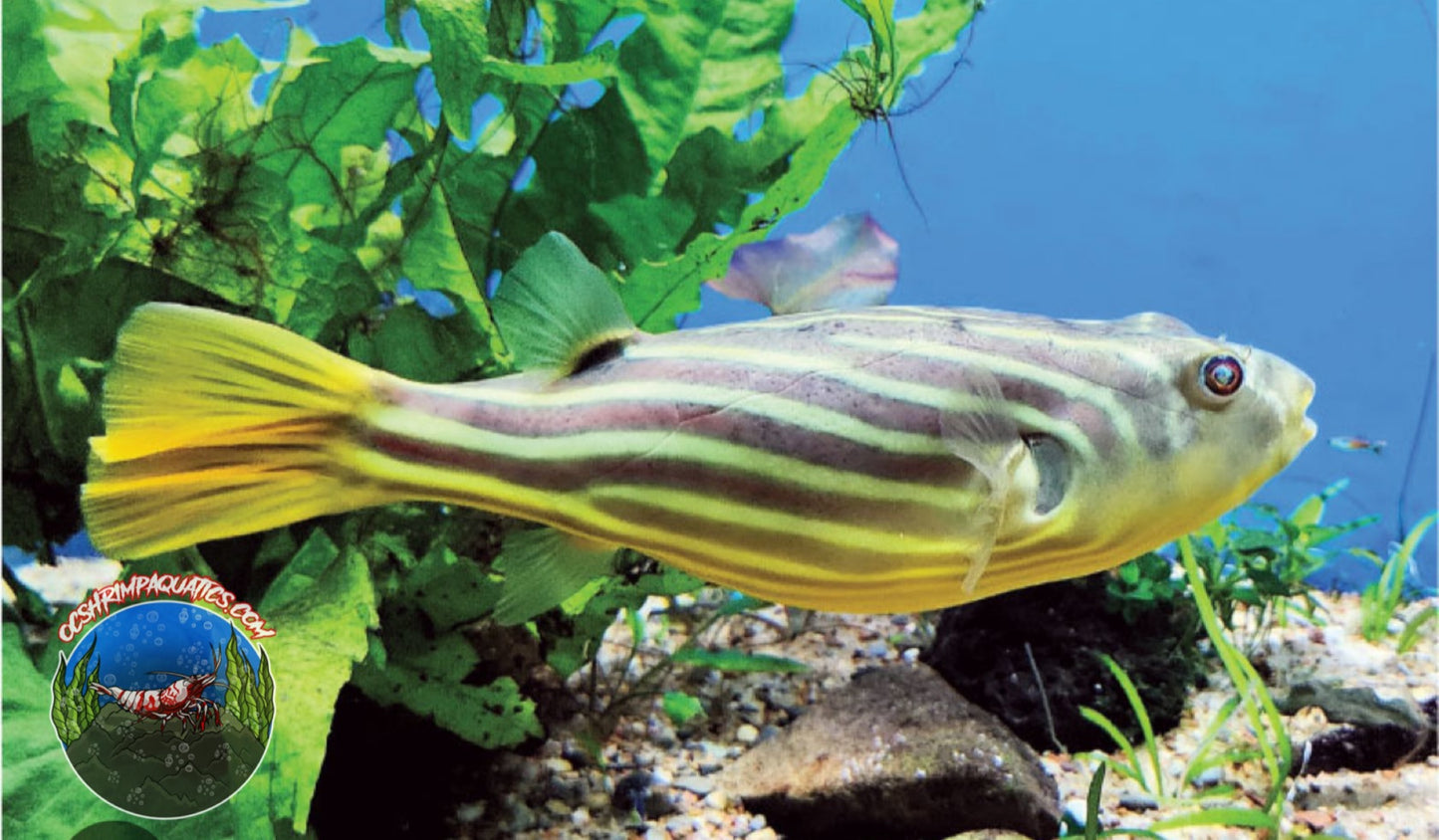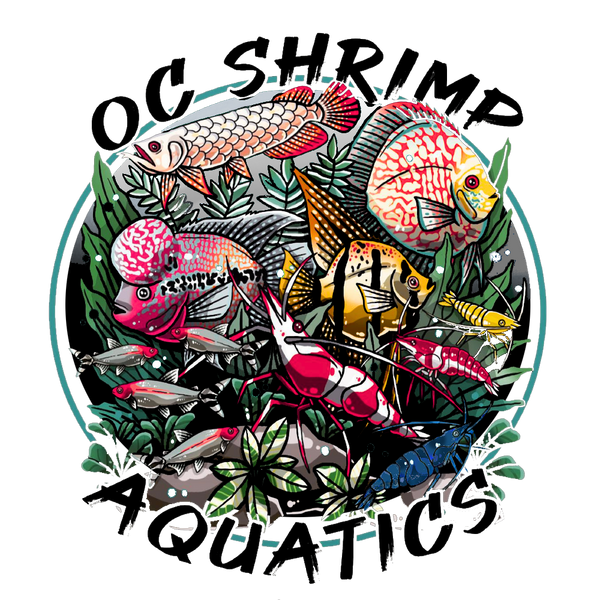1
/
of
1
OC SHRIMP AQUATIC
FAHAKA PUFFER
FAHAKA PUFFER
Regular price
$24.99 USD
Regular price
Sale price
$24.99 USD
Unit price
/
per
Shipping calculated at checkout.
Couldn't load pickup availability
Share
Fahaka Puffer (Tetraodon lineatus), also known as the Nile Puffer or Band Puffer, is a large and fascinating freshwater pufferfish species known for its impressive size and personality. These fish are not suitable for beginners due to their specific care requirements, aggressive nature, and large size. However, with proper care and dedication, they can be an incredibly rewarding pet. Here's a comprehensive care guide for keeping a Fahaka Puffer:
Tank Size and Setup
- Tank Size: Fahaka Puffers require a large tank due to their potential size and activity level. A minimum of 100 gallons is recommended for a single Fahaka Puffer, but larger tanks (125 gallons or more) are ideal to provide ample space for swimming and reduce territorial behavior.
- Aquascape: The tank should have plenty of open swimming space with hiding spots created using decorations like rocks, driftwood, and large, robust plants. Artificial plants are often preferred, as Fahakas may damage live plants. Heavy decor should be secured to prevent tipping over, as puffers can be quite strong.
- Substrate: A sand substrate is preferred, as Fahaka Puffers enjoy burrowing and digging. Avoid sharp or rough substrates that could harm the puffer’s delicate belly.
- Lighting: Moderate lighting is sufficient. Fahakas do not have specific lighting requirements, but subdued lighting can help create a calmer environment.
Water Parameters
- Temperature: Fahaka Puffers prefer warmer water temperatures, ideally between 75-82°F (24-28°C). Use a reliable heater to maintain a consistent temperature.
- pH: They thrive in slightly alkaline to neutral water, with a pH range of 7.0 to 8.0. Stability in pH is more important than hitting a specific number within this range.
- Hardness: Fahaka Puffers prefer moderate water hardness, with a general hardness (GH) of 10-15 dGH. They can adapt to slightly softer or harder water, but stability is key.
- Water Quality: Maintaining excellent water quality is crucial. Fahaka Puffers are sensitive to poor water conditions. Regular water changes (25-50% weekly) are necessary to keep ammonia, nitrite, and nitrate levels low. A high-quality water conditioner should be used to treat tap water.
Filtration and water Flow
- Filtration: Use a powerful filtration system that provides both mechanical and biological filtration. Canister filters are often recommended due to their efficiency and ability to handle large bioloads. Fahaka Puffers are messy eaters, producing a lot of waste, so efficient filtration is essential to maintain water quality.
- Water Flow: Moderate water flow is ideal. Fahaka Puffers prefer some water movement but not strong currents. Adjust filter outputs to create gentle circulation.
Feeding
- Diet: Fahaka Puffers are carnivorous and have strong beaks designed to crush hard-shelled prey. Their diet should consist mainly of snails, crabs, shrimp, crayfish, and other shelled foods to help wear down their ever-growing teeth. Occasional feedings of mussels, clams, krill, and high-quality frozen foods can also be offered.
- Variety: Providing a varied diet is important for their health and well-being. Live foods should be included to stimulate natural hunting behavior and provide enrichment.
- Feeding Frequency: Young Fahaka Puffers should be fed daily, while adults can be fed every other day. Offer only as much food as they can consume within a few minutes to avoid overfeeding and water quality issues.

Order and get 125 reward points
Earn points by signing up for our rewards program

